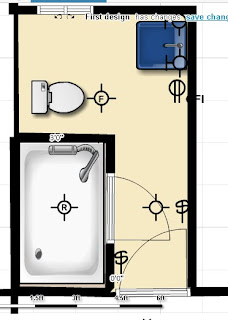
Yesterday while I was at the local nursery browsing around, I saw this
Dendrobium phaelenopsis hybrid. It's small, windowsill size, nice flower. It had a tag from a local grower, which I thought was cool. When I got it home, I realized there was no hybrid name, annoying but not a big deal.

Illustration via
Wikimedia commons, 1901. Lindenia Iconographie des Orchidées. Following
Dendrobium info is from the
Canadian Orchid Congress, summarized. Probably as good a source of info as any, especially in Northern areas. I edited the instructions for brevity and for my specific conditions, but much is directly from the linked site. There are several reasons why it's hard to find culture info specific to a specific
Dendrobium: there are many types, and culture requirements vary; there are many many hybrids; and naming is a mess. I still haven't sorted out whether these are really
Vappodes phaelenopsis hybrids. Wikipedia routes
searches for Dendrobium phaelenopsis to
Vappodes phaelenopsis. Plus, did they really have to give these a species name that is identical to that of an unrelated genus (
Phaelenopsis)? Confusion is also noted at
orchidculture.com "There is a great deal of confusion surrounding these species, and it will probably continue to be with us for some time. Although these two species have been lumped together at times and are still considered to be synonymous by some authorities, the most recent taxonomic work has them listed as separate species. While very similar to each other, the flowers of D. bigibbum tend to be somewhat smaller, have sepals and petals that are more strongly reflexed, and a lip that is broader and more rounded or notched at its apex. In addition, plants known as D. bigibbum are found in areas nearer the equator and, therefore, require much warmer temperatures, especially during winter." Note that
Dendrobium biggibum is an earlier name for
Dendrobium phalaenopsis. I think.
*Use a coarse medium. Fir bark mixtures are best (note, the specimens that I bought from Missouri botanical garden, and this one, are in small lava chunks. They drain VERY fast)
*Repot when the growth has reached the edge of the pot or if the
medium is beginning to decompose...Repot as new growths are just starting to form.
*These plants like a rapid drying cycle – grow in the smallest
possible pot.
*Roots should be moist at all times when in active growth. Allow to dry out somewhat as the growth matures and when not actively growing.
*When watering, water thoroughly. (I let water run through the medium each time)
*If hard water is used, water very heavily to flush minerals. Rain water is better (I use rain water).
*Fertilize weakly and frequently with a balanced fertilizer. (I use the Schulz orchid food, 1/4 tsp per gallon, weekly, during active growth. For bloom time and when growth is not active, I either don't fertilize or use a low-nitrogen Grow-more bloom food, also weakly.
*Healthy leaves produce more and bigger flowers:
*Light should be medium to high light levels are appropriate. Leaves should be a light green, not yellowish (too much light) or dark green (too little light). They should be somewhat stiff, not long and floppy (more light needed). A reddish edge to the leaves indicates the light is on the upper boundary of a proper level of light.
*Grow in 2-4 four hours of sunshine on an East, West or South window sill.
*
Dendrobiums do best with 60-70% humidity but will grow and bloom at somewhat lower humidity levels. Use humidifier to raise humidity – humidity pans and misting minimally effective. Enclosing plant growing areas is effective
but ensure fresh air and air movement to avoid mold and rot.
*
Dendrobium phalaenopsis hybrids are warm growing, with night minimum temperatures of 18°C (65 F) and day maximums of 32°C (90 F). (My range is more like 55 at night and 70 during the day, winter; I may need to keep this plant at work which is warmer) The orchid culture site linked above states
"TEMPERATURES: Summer days average 85-86F (29-30C), and nights average 72F (22C), with a diurnal range of 13-14F (7-8C). The diurnal range varies only 3F (2C) all year."*
Dendrobium phalaenopsis may bloom at any time during the year and the flowers last for 4 to 8 weeks.
The orchid culture site also states "D. phalaenopsis is often considered difficult to grow and bloom because it requires high light, warm winter temperatures, and a winter dry season, a combination that is sometimes difficult to provide in a general collection. So we'll see. I better hold of on adding any more to this collection, no need for all leaf and no flower with a lot of frustration in the future. As I often state, "We'll see".



